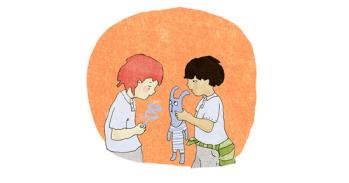
The UK soft drinks industry levy introduced in 2018 may have saved more than 5,500 hospital admissions for tooth extractions, according to an analysis by researchers at the University of Cambridge.
The UK soft drinks industry levy introduced in 2018 may have saved more than 5,500 hospital admissions for tooth extractions, according to an analysis by researchers at the University of Cambridge.
This is an important finding given that children aged five to nine are the most likely to be admitted to hospital for tooth extractions under general anaesthesia
Nina Rogers
In a study published today in BMJ Nutrition, Prevention & Health, researchers at the Medical Research Council (MRC) Epidemiology Unit at Cambridge found that the levy may have reduced the number of under-18s having a tooth removed due to tooth decay by 12%. The largest reductions were in children aged up to nine years old.
Sugar-sweetened drinks account for around 30% of the added sugars in the diets of children aged one to three years and over a half by late adolescence. In England, nearly 90% of all tooth extractions in young children are due to decay, resulting in around 60,000 missed school days a year.
The World Health Organization has recommended a tax on sugar-sweetened drinks to reduce sugar consumption, which more than 50 countries have implemented. In March 2016, the UK Government announced a soft drinks industry levy or ‘sugar tax’, which aimed to reduce sugar intake by encouraging drinks manufacturers to reformulate their products. The levy was implemented in April 2018.
While the relationship between sugar-sweetened drinks and tooth decay is well established, no studies have used real-world data to examine the relationship between the levy and dental health.
To address this, the researchers analysed hospital admissions data for tooth extractions due to tooth decay in children up to 18 years old in England from January 2014 to February 2020. They studied trends overall as well as broken down by neighbourhood deprivation and age groups.
Overall, in children aged 18 and under, there was an absolute reduction in hospital admissions of 3.7 per 100,000 population per month compared to if the soft drinks levy had not happened. This equated to a relative reduction of 12% compared to if the levy had not been introduced.
Based on a population of nearly 13 million children in England in 2020, the researchers estimated that the reduction avoided 5,638 admissions for tooth decay. Reductions in hospital admissions were greatest in younger children aged up to four years and among children aged five to nine years, with absolute reductions of 6.5 and 3.3 per 100,000 respectively.
Dr Nina Rogers from the MRC Epidemiology Unit at the University of Cambridge, the study’s first author, said: “This is an important finding given that children aged five to nine are the most likely to be admitted to hospital for tooth extractions under general anaesthesia.”
No significant changes in admission rates for tooth decay were seen in older age groups of 10–14 years and 15–18 years. However, reductions in hospital admissions were seen in children living in most areas regardless of deprivation.
As this is an observational study and because there was no comparable control group, the researchers cannot say definitively that the soft drinks levy caused this reduction in tooth decay. They acknowledge that other national interventions such as the sugar reduction programme and compulsory nutrition labels alongside the levy may have raised public awareness of sugar consumption and influenced buying habits.
Nevertheless, they conclude that their study “provides evidence of possible benefits to children’s health from the UK soft drinks industry levy beyond obesity which it was initially developed to address.”
Professor David Conway, co-author, and professor of dental public health at University of Glasgow added: “Tooth extractions under general anaesthesia is among the most common reason for children to be admitted to hospital across the UK. This study shows that ambitious public health policies such as a tax on sugary drinks can impact on improving child oral health.”
The research was funded by the Medical Research Council and the National Institute for Health and Care Research.
Reference
Rogers, N T et al. Estimated impact of the UK soft drinks industry levy on childhood hospital admissions for carious tooth extractions: interrupted time series analysis. BMJ Nutrition Prevention & Health; 14 Nov 2023; DOI:10.1136/bmjnph-2023-000714
Adapted from a press release from the BMJ.

The text in this work is licensed under a Creative Commons Attribution-NonCommercial-ShareAlike 4.0 International License. Images, including our videos, are Copyright ©University of Cambridge and licensors/contributors as identified. All rights reserved. We make our image and video content available in a number of ways – as here, on our main website under its Terms and conditions, and on a range of channels including social media that permit your use and sharing of our content under their respective Terms.




